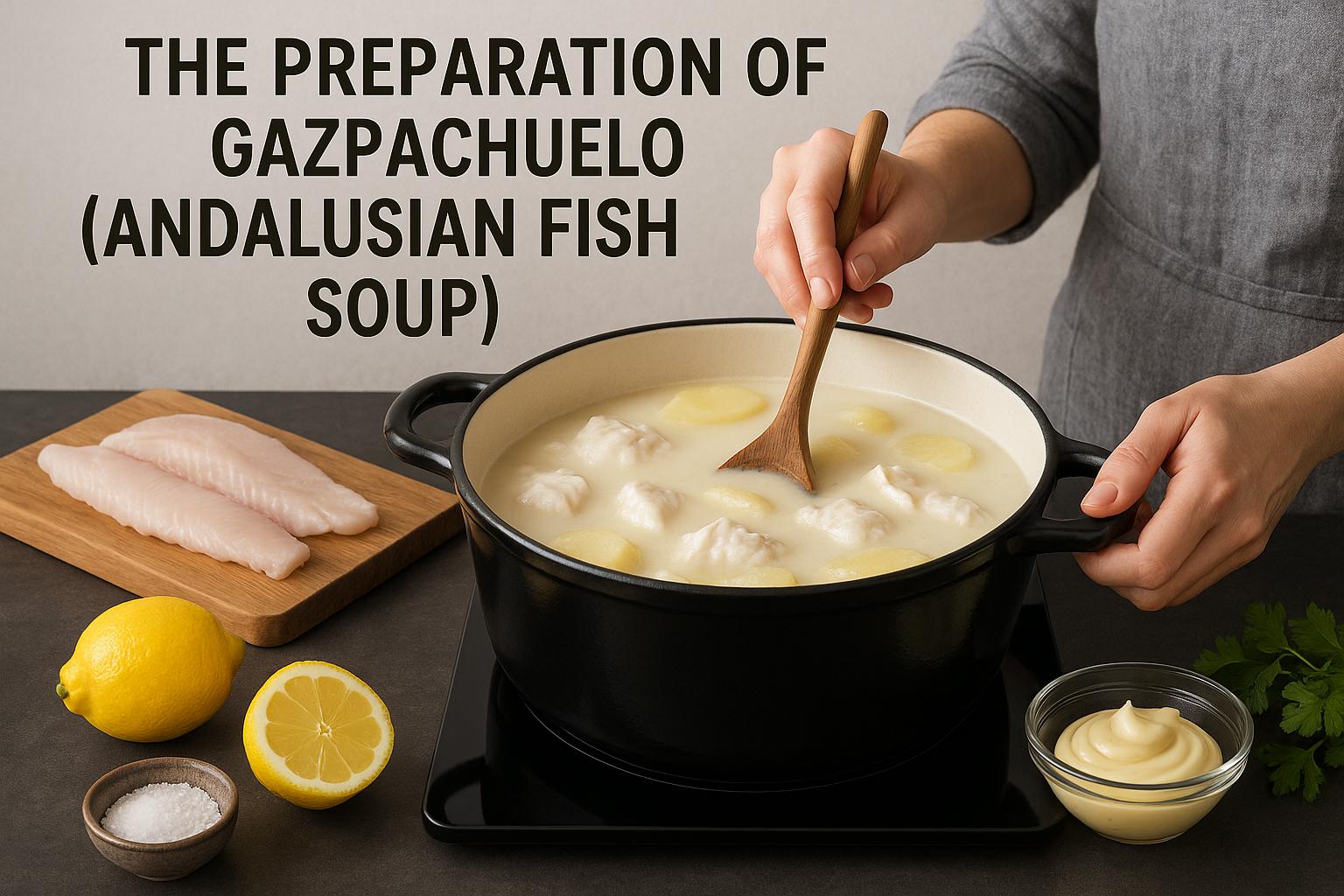
Gazpachuelo is a traditional dish originating from the Andalusian region of Spain, specifically linked with the province of Málaga. This dish is notably different from the well-known chilled gazpacho, offering a warm, rather than cold, culinary experience. What sets gazpachuelo apart is its distinct creamy consistency, achieved through the use of mayonnaise. The recipe epitomizes Andalusian culinary traditions, reflecting the regional abundance of seafood and the simplicity of using everyday ingredients effectively.
The origins of gazpachuelo can be traced back to the kitchens of Andalusian fishermen, highlighting its roots as a meal borne of necessity and ingenuity. In the past, this dish would have been a warming comfort for the local community during the cooler months, offering a hearty meal from the simplest of resources. Today, it remains emblematic of the region’s ability to create rich, rewarding dishes from basic supermarket staples and fresh catches from the sea.
In essence, gazpachuelo serves as a testament to Andalusian culinary artistry—transforming humble ingredients into a dish of satisfying complexity. It stands as a reminder of the everyday creativity found in traditional Spanish kitchens.
Gazpachuelo showcases the transformative power of core, simple ingredients: fish, potatoes, water, and mayonnaise. The typical choice of fish includes white varieties, such as hake or cod. These types are favored for their mild flavor and ability to complement the creamy base without overpowering the dish.
Nonetheless, variations exist that may include the use of prawns or shellfish, catering to availability and personal preference. Mayonnaise plays a significant role, offering the soup’s unique creamy texture, while lemon juice is often added for a subtle tang that lifts the entire flavor profile.
To commence the preparation of gazpachuelo, it is crucial to start with a clean and organized cooking space. Begin by boiling the chosen fish and potatoes in a pot of water. Ensure that the fish has been meticulously cleaned and the potatoes are peeled and sliced—attention to detail here ensures a smooth cooking process.
Once the fish reaches the desired state of cooking and tenderness, remove it from the pot and set it aside. The next stage involves crafting a homemade mayonnaise, which significantly enhances the dish. Utilize egg yolks, olive oil, and a splash of vinegar or lemon juice. Achieving the right consistency requires a steady whisking action while gradually incorporating the olive oil. For those seeking convenience, store-bought mayonnaise remains a viable substitute.
With the base of the soup now established, the crucial step follows: integrating the mayonnaise. This step demands careful attention, as it’s essential to temper the mayonnaise with a small amount of the hot broth from the pot to avoid curdling. This tempering ensures the consistency remains smooth. Once tempered, slowly add the mayonnaise to the soup over a low flame, stirring gently to ensure an even blend.
Return the previously set-aside fish to the pot, and introduce lemon juice to taste. It’s essential to adjust the seasoning at this stage, with salt and pepper to enhance the flavors. Cook gently, allowing the components to heat thoroughly without causing the mayonnaise to separate.
Gazpachuelo is ideally served fresh and hot, offering a delightful contrast to the more commonly known chilled soups originating from this region. To fully appreciate the dish, accompany it with a serving of crusty bread. The bread adds a texture that complements the creamy soup, creating a balanced culinary experience.
Traditionally, this dish has been a modest, yet nourishing meal, especially suited for colder weather. It provides not just warmth, but also a sense of sustenance, making it a popular choice during winter months.
While staying true to its original essence, modern interpretations of gazpachuelo have introduced subtle variations. Some chefs incorporate additional seafood varieties to enhance the soup’s flavor spectrum. Others experiment with the inclusion of spices or herbs, adding another layer of depth.
Nonetheless, the quintessential characteristic of gazpachuelo remains its creamy consistency and its harmonious balance of flavors. The adaptability of the dish allows it to cater to a wide range of palates while maintaining its signature taste.
Gazpachuelo stands as a remarkable illustration of the creativity and resourcefulness inherent in Andalusian cuisine. By utilizing straightforward ingredients and meticulous preparation, this comforting fish soup brings to life the rich culinary heritage of the region. It serves as an invitation to explore the broader spectrum of Andalusian gastronomy, encouraging a deeper appreciation for meals that hinge on simplicity but deliver profound depth in flavor. For those interested in delving deeper into the world of Andalusian culinary delights, exploring further traditional meals can provide an expansive understanding of this vibrant gastronomic landscape.